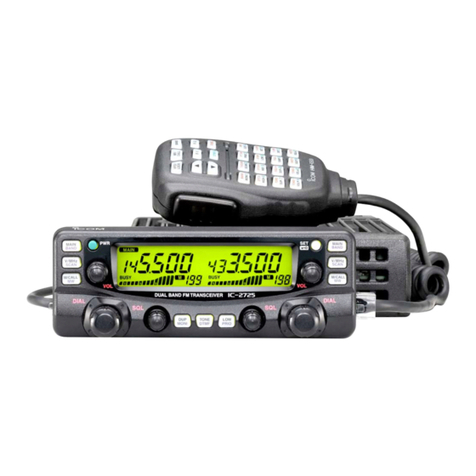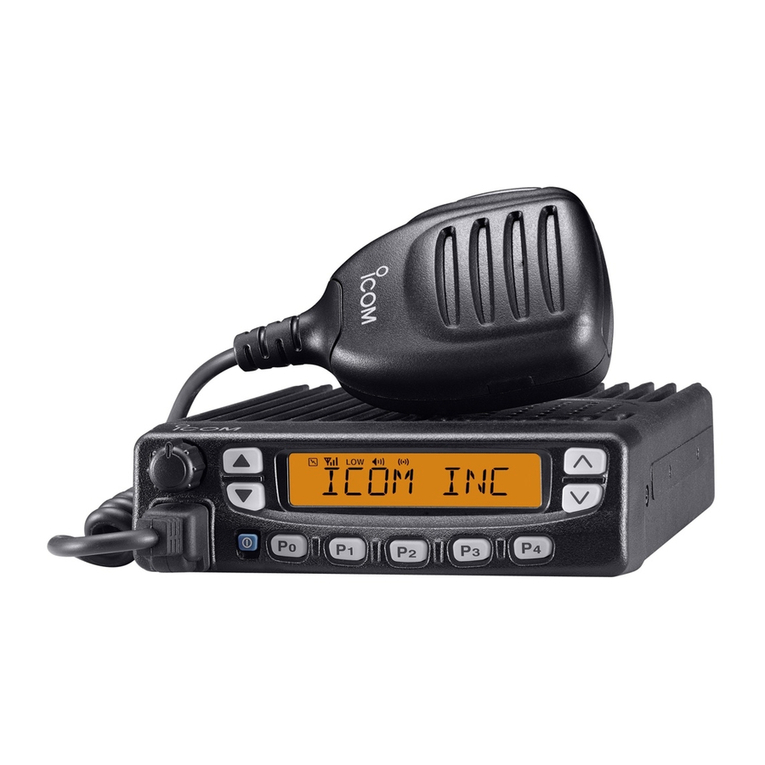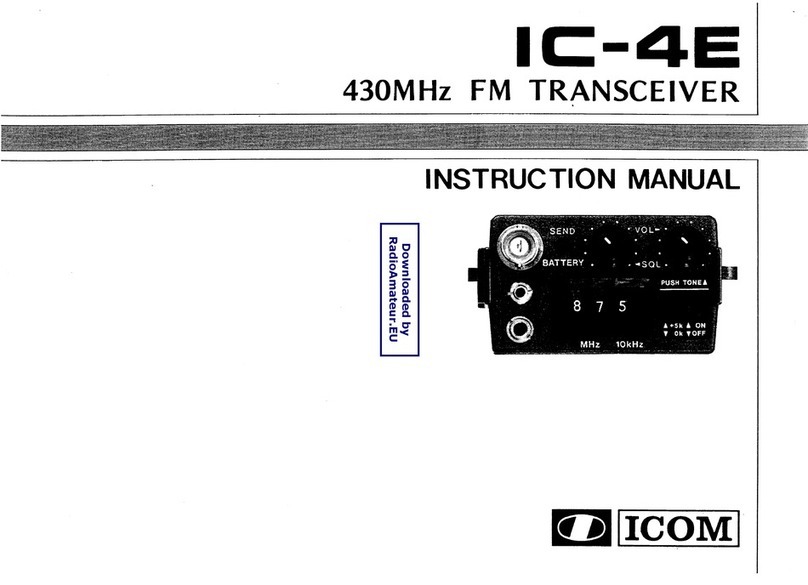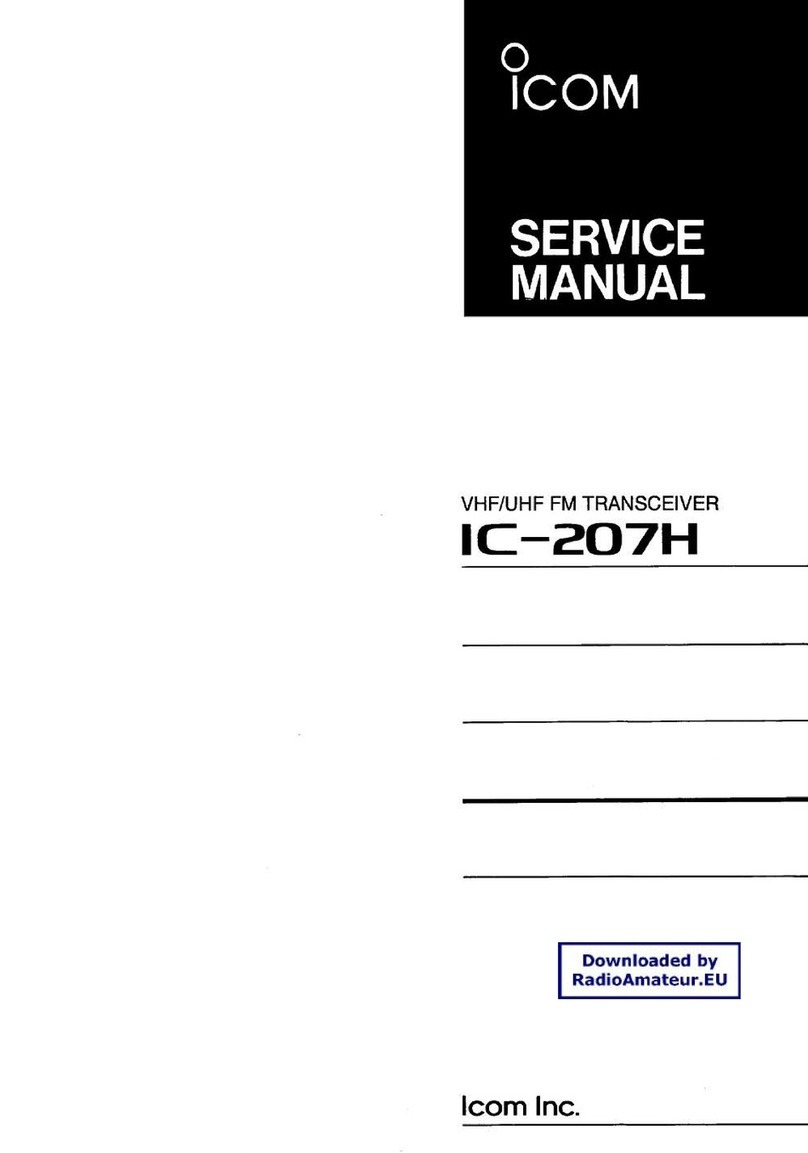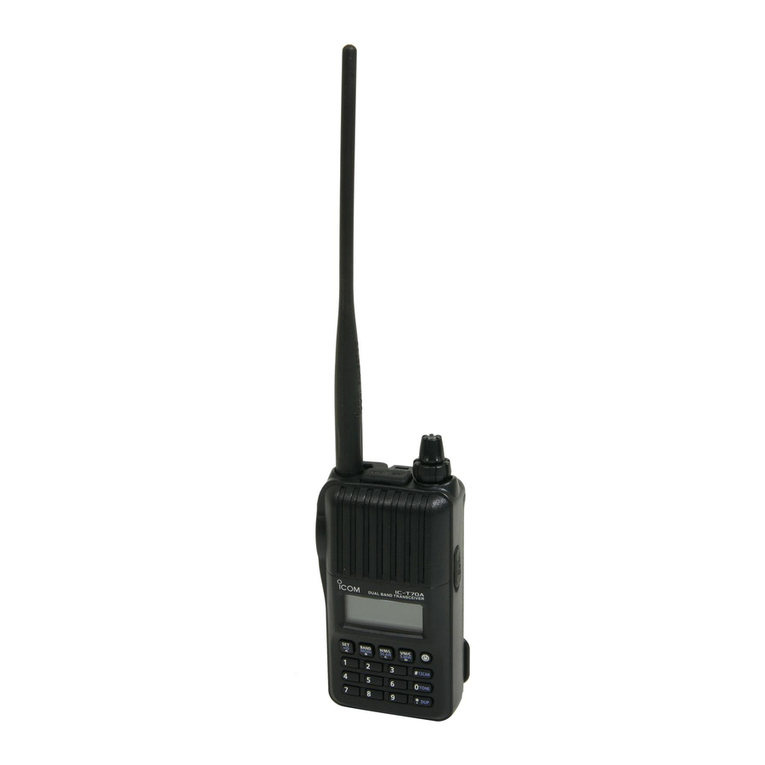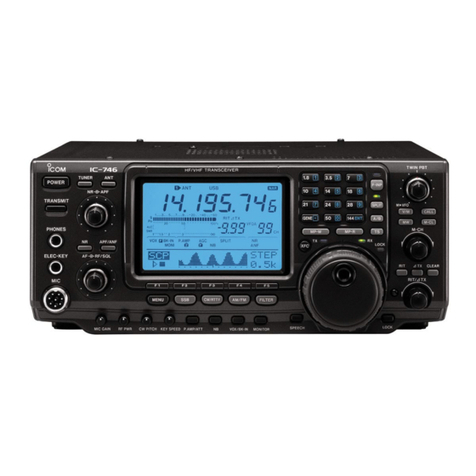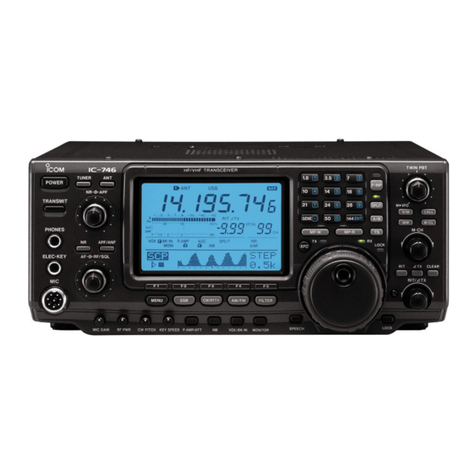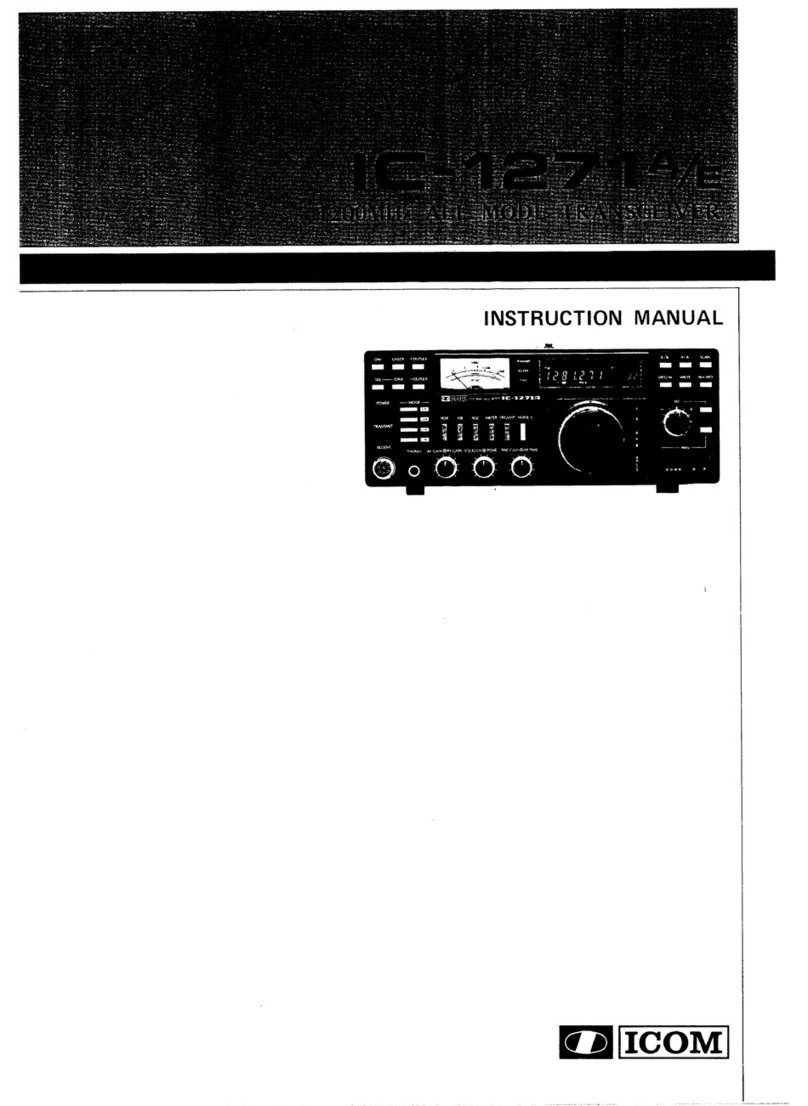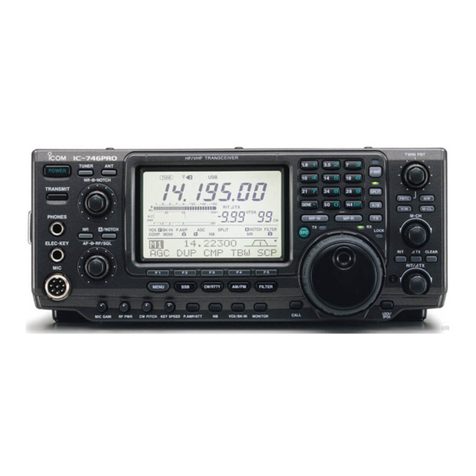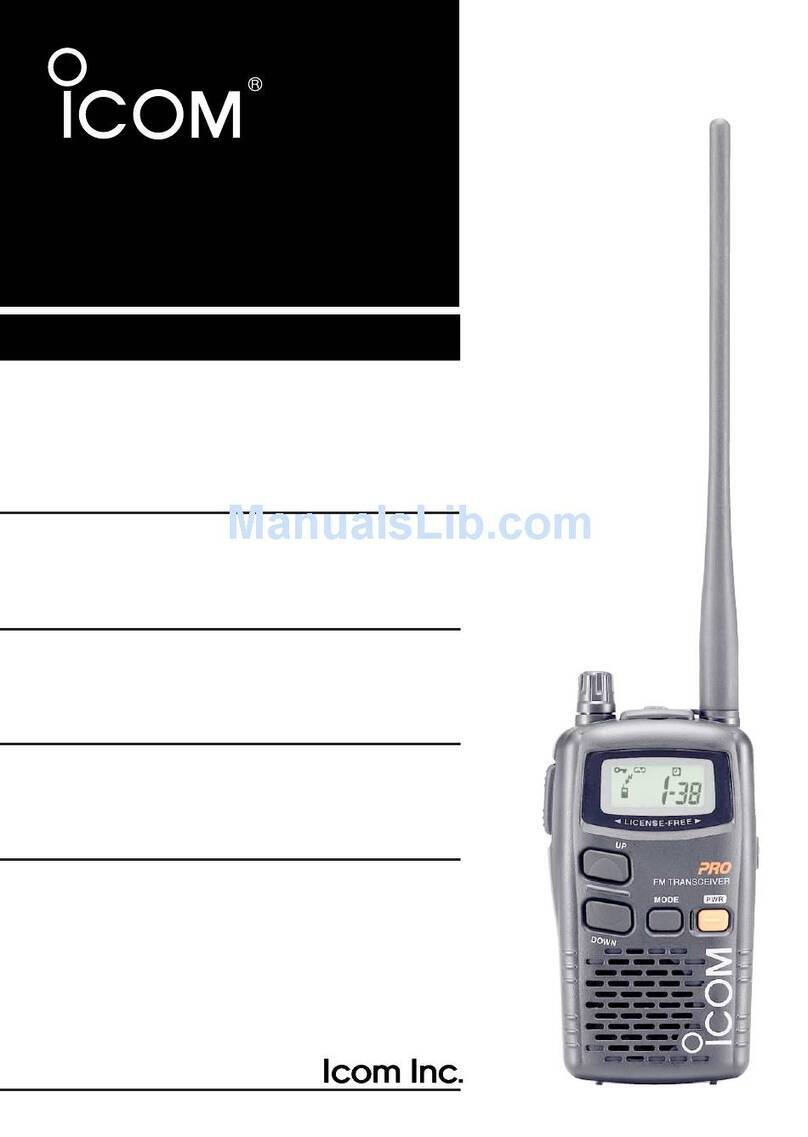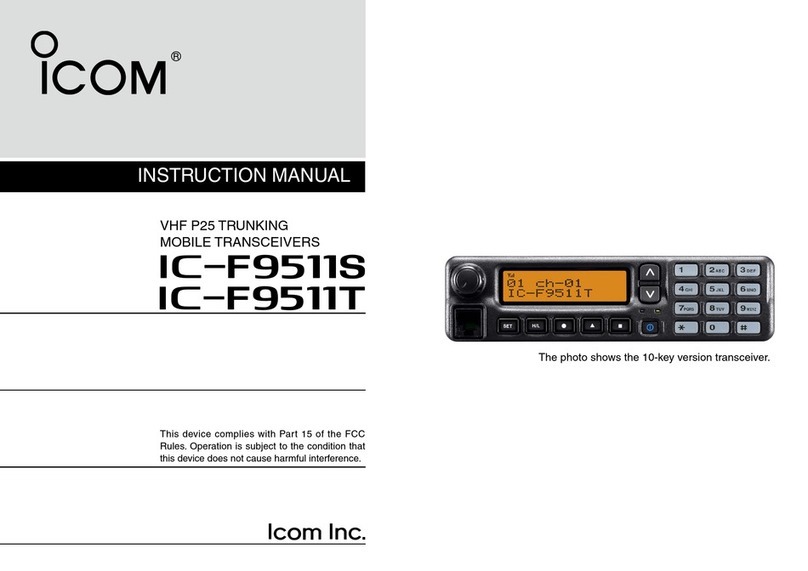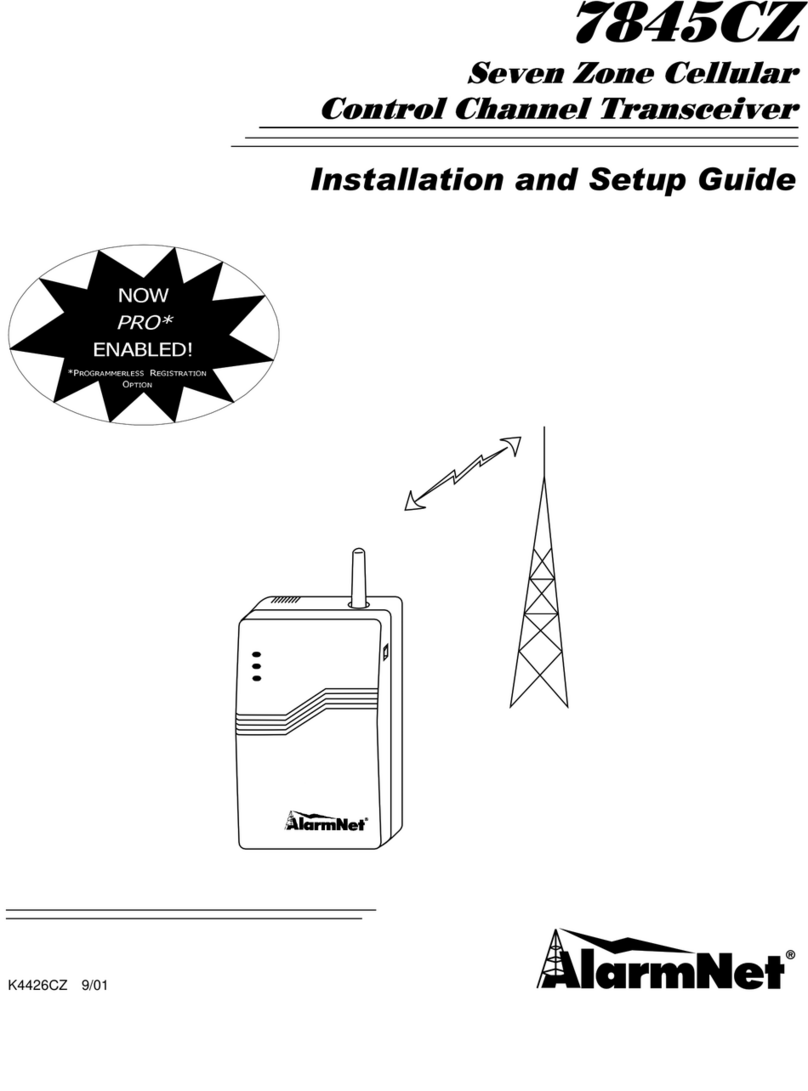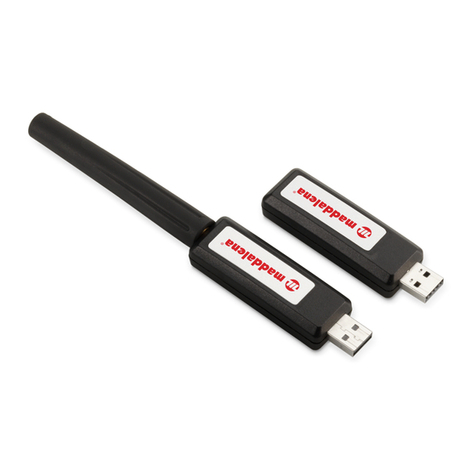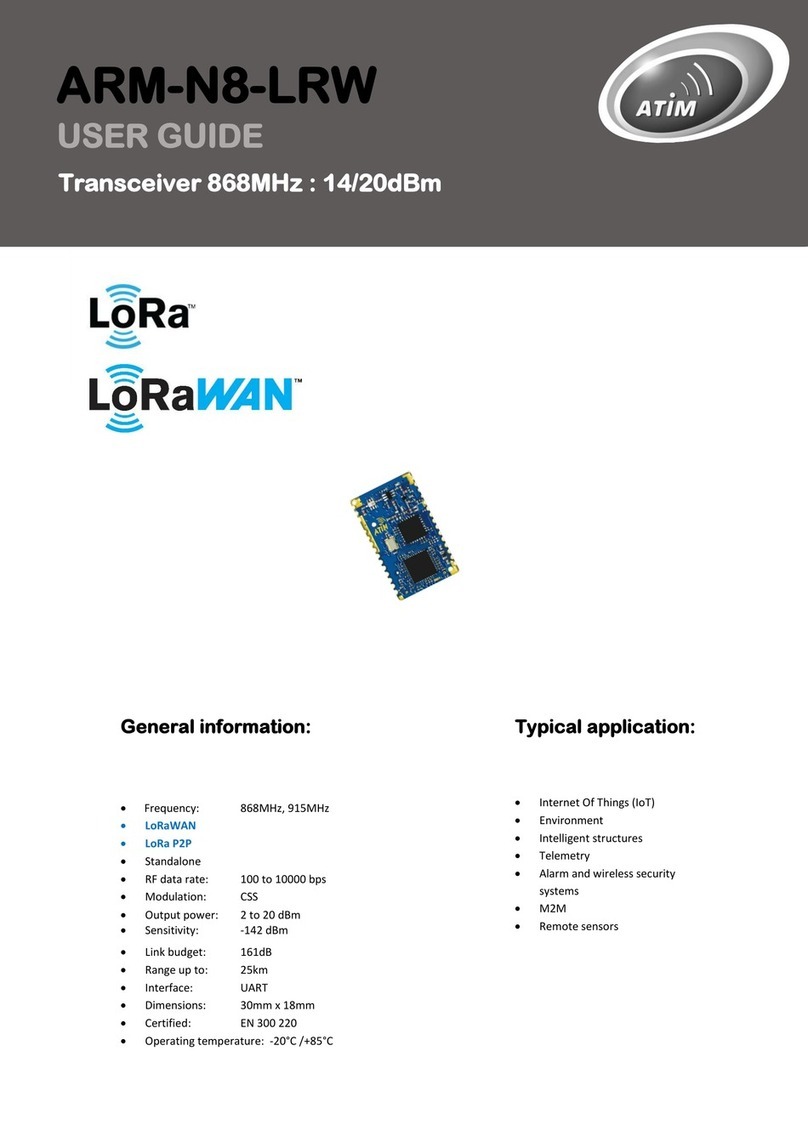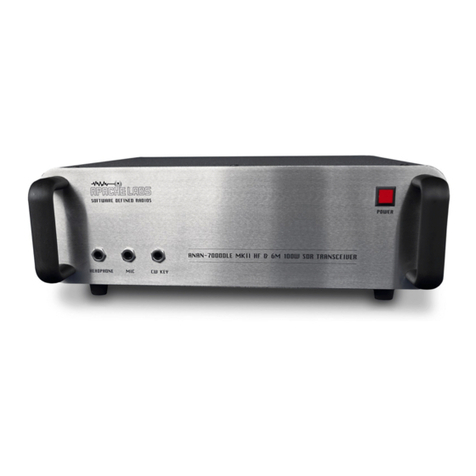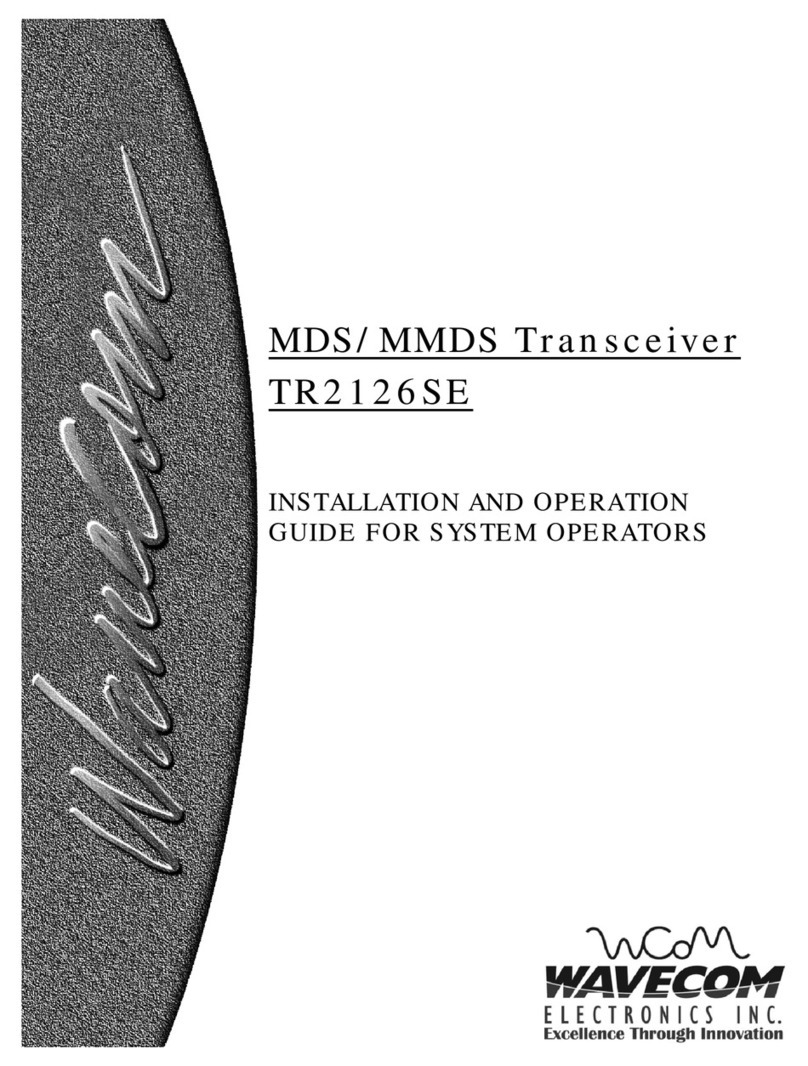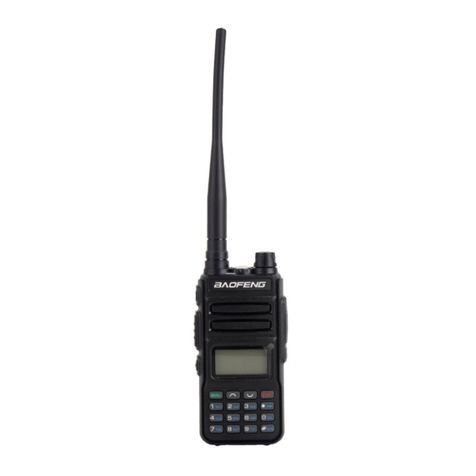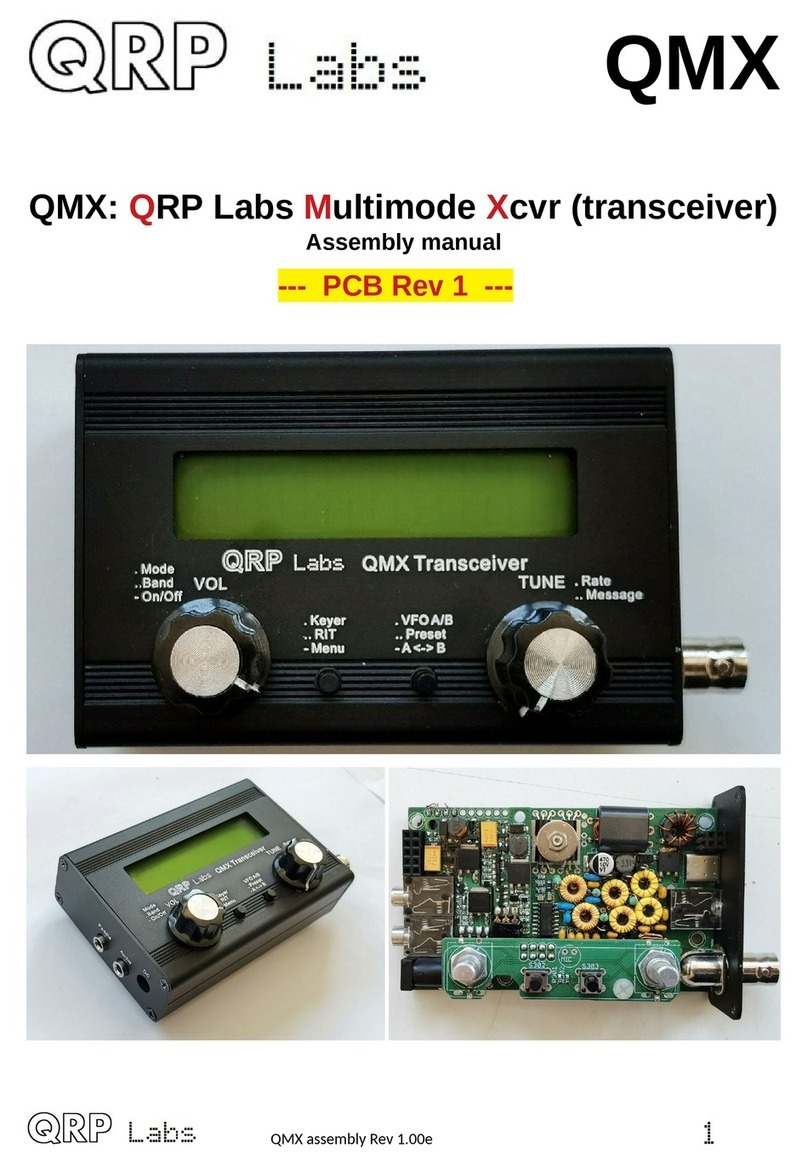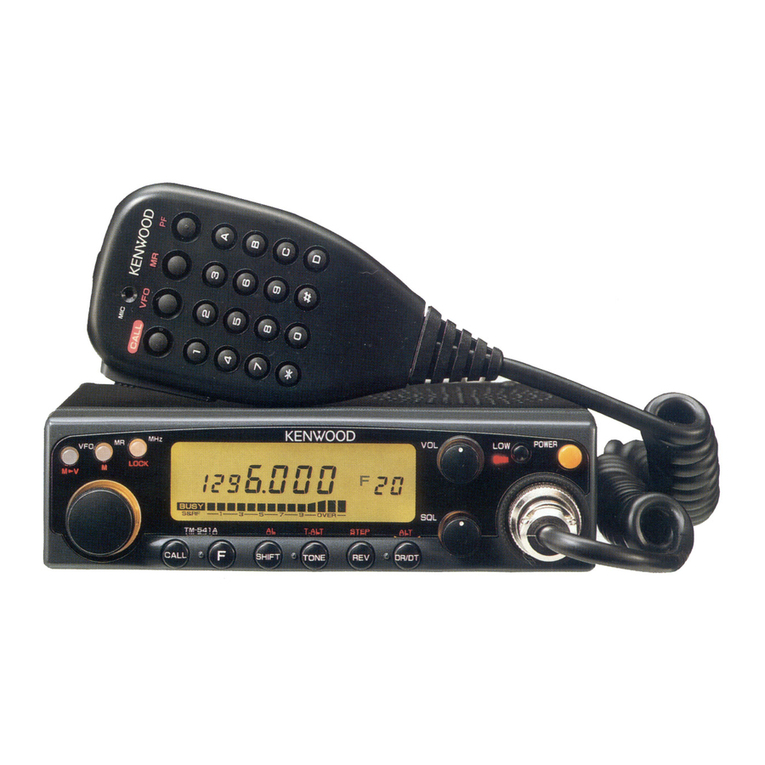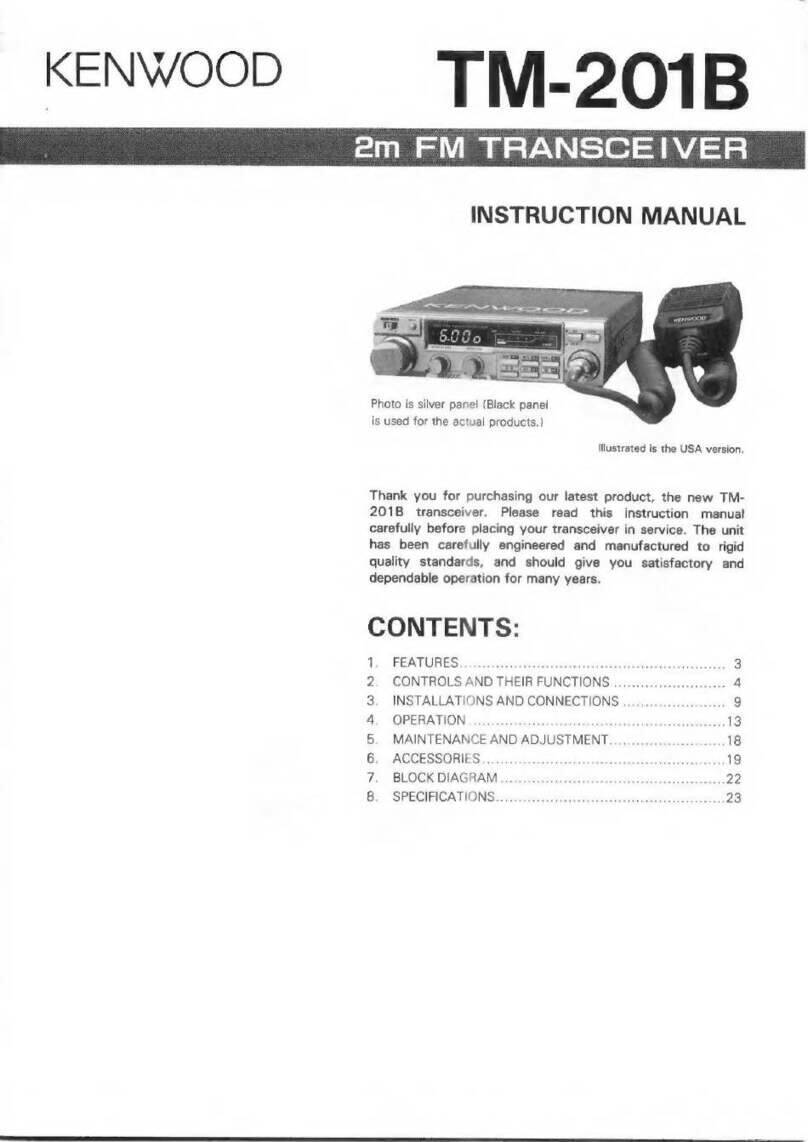Icom IC-G88-T User manual

INSTRUCTIONS w
VHF TRANSCEIVER
Iç-G88-T
Thank you for choosing this Icom product.
READ ALL INSTRUCTIONS carefully and com-
pletely before using the transceiver.
q ANTENNA CONNECTOR
Connect the supplied antenna.
w LED INDICATOR
•Lights red while transmitting.
•Lights green while receiving a signal, or when the
squelch is open.
•When the indicator slowly blinks green, you should
charge the battery.
•When the indicator quickly blinks green, you must
charge the battery.
e [PTT]
Hold down to transmit, and release to receive.
r [UP]*/[DOWN]*
• In the VFO mode
Set the operating frequency.
• In the Memory mode
Select a Memory channel.
• In the Set mode
Select an option for the item.
• During a scan
Change the scanning direction.
t
[P0]*: • Push to enter or exit the VFO Set mode.
• Hold down to enter or exit the User Set mode.
[P1]*: • Push to toggle the Duplex and Simplex mode.
• Hold down for 1 second to select the Sub Audible
tone.
[P2]*: • Push to start or cancel a VFO or Memory scan.
• Hold down for 1 second to set or cancel the Scan
tag to the selected channel.
[P3]*: • Push to select the VFO mode or Memory mode.
In the VFO mode:
• Hold down for 1 second to copy the VFO frequency to
the selected Memory channel.
In the Memory mode:
• Hold down for 1 second to copy the selected Memory
channel frequency to the VFO.
y
SPEAKER-MICROPHONE JACK
Connect an optional speaker-microphone.
CAUTION:
The transceiver meets IP67 requirements for the
dust-tight and waterproof protection, only when the jack cover
or the optional HM-168LWP is attached.
u
[TOP] (red button)
• Push to open or close the squelch.
• Hold down for 1 second to set the selected channel as the
Favourite channel.
i
[VOL]
Rotate to turn the power ON or OFF, and to adjust the audio level.
o
[ROTARY SELECTOR] (Favourite CH Selector)
In the Memory mode, rotate to select the frequently used
channels (Favourite channels: 1~16).
!0
KEY PAD
Push to enter the operating frequency or Memory channel number.
PANEL DESCRIPTION
o[VOL]
i[TOP]
Speaker
uSPEAKER-MICROPHONE
JACK
Microphone
Function Display
(LCD)
y[P0]*, [P1]*, [P2]*, [P3]*
wLED INDICATOR
qANTENNA CONNECTOR
!0[ROTARY SELECTOR]
e[PTT]
r[UP]*
[DOWN]*
tKEY PAD
ySetting the favorite channel
You can assign the frequently used channels to the rotary selector.
Set the rotary selector to the position where the favorite channel
is assigned to.
Push [CH Up] or [CH Down], or push the 10-key pad to select
the desired channel.
Push [TOP] (red) to assign the selected channel to the rotary selector
position.
q
w
e

DTurning power ON
Rotate [VOL] to turn ON the power.
[UP]
[PTT]
Microphone
[DOWN]
[VOL]
[ROTARY
SELECTOR]
Function
Display
(LCD)
Key pad
DReceiving and Transmitting
Receiving:
1. Set the operating frequency.
•In the VFO mode:
Enter the operating frequency on the key pad,
or push [UP]/[DOWN] to change the frequency.
•In the Memory mode:
Enter the Memory channel number on the key pad,
or push [UP]/[DOWN] to change the channel.
You can select a Favorite channel (1~16) by rotating
[ROTARY SELECTOR], if programmed.
2. When a call is received, rotate [VOL] to adjust the
audio output level to a comfortable listening level.
Transmitting:
Wait until the frequency is clear to avoid interference.
1. While holding down [PTT],speak at a normal voice level.
2. Release [PTT] to receive.
q rw e
u
y
t
q SIGNAL STRENGTH INDICATOR
Displays the relative receive signal strength.
w LOW POWER ICON
Displayed when low output power (L1 or L2) is selected.
e AUDIBLE ICON
Displayed while in the ‘Audible’ (unmuted) mode.
FUNCTION DISPLAY
BASIC OPERATION
r SCAN ICON
• Displayed when a Scan-tagged channel is selected.
• Blinks while scanning.
t KEY LOCK ICON
Displayed when the Key Lock function is ON.
y BATTERY INDICATOR
•
Displays the remaining battery charge.
• Blinks when the battery requires a charge.
u ALPHANUMERIC READOUT
Displays messages such as the operating frequency,
channel name, Set mode item and so on.
CAUTION:
Transmitting without an antenna may damage the
transceiver.
TIP: To maximize the readability of your transmitted
signal, pause for a second after pushing [PTT] and
hold the microphone 5 to 10 cm (2 to 4 inches) from
your mouth, and then speak at your normal voice level.
NOTE:
the battery pack must be fully charged for optimum
life and operation. See BATTERY CHARGING de-
scribed in INSTRUCTIONS q.
PROGRAMMING MEMORY CHANNEL
(1) Push [P3] to select the memory mode.
• “MR” appears
(2) Push [CH Up] or [CH Down] to select the memory
channel to be programmed.
(3) Push [P3] again to select the VFO mode.
(4) Set the desired frequency in the VFO mode.
• Push [CH Up] or [CH Down], or push the keys on
keypad to set a frequency.
(5) Push and hold [P3] to program.
• “VF02 MR” appears briefly to confirm that the
frequency is saved.
SETTING A FREQUENCY
Using [CH Up] or [CH Down]
(1) Push [P3] to select the VFO mode.
(2) Push [CH Up] or [CH Down] to set a frequency.
•The frequency changes according to the selected
tuning step.
Using the keypad
(1) Push [P3] to select the VFO mode.
(2) To enter the desired frequency, enter 6 digits, starting
from the 100 MHz digit.
i

INITIAL SET MODE
Entering the Initial Set mode:
Push [P0] to enter the Initial Set mode.
•WhileintheInitialSetmode,push[P0]againto select an item, and then change the value
or setting by pushing [CH Up] or [CH Down].
Push [PTT] to exit the Initial Set mode.
Initial Set mode items :
Tuning step (TS)
Set the VFO tuning step to 5, 10, 12.5, 15, 20, 25,
30 or 50 kHz.
(1) Push [P0]
•“TS”appears(2) Push [CH Up] or [CH Down]
to select the desired
tuning step.
Frequency offset (+-)
Set the duplex frequency offset, the transmit frequency
shifts up or down from the receive frequency by the
offset amount.
(1) Push [P0]
•“+-”appears(2) Push [CH Up] or [CH Down]
to select the desired
frequency offset.
Reversed Duplex function (REV)
Turn the Reversed Duplex function ON or OFF
WhentheReversedDuplexfunctionisON,thereceiveand transmit frequencies are reversed.
(1) Push [P0]
•“REV”appears(2) Push [CH Up] or [CH Down]
to select the desired
reversed duplex function.
Output power (H/L)
Set the desired output power to H, L2, or L1
The transceiver has 3 output power levels to suit
your operating requirements. Lower output powers
duringshort-distancecommunicationsmayreducethe possibility of interference to other stations and
will reduce current consumption.
(1) Push [P0]
•“H/L”appears(2) Push [CH Up] or [CH Down]
to select the desired
output power.
Passband width (W/N)
Set both the transmission and reception passband
width to wide or narrow.
(1) Push [P0]
•“W/N”appears(2) Push [CH Up] or [CH Down]
to select the desired
passband width.
Repeater tone frequency (rt)
Select the subaudible tone needed to access the
repeater. A total of 51 tone frequencies (67.0 254.1 Hz)
are selectable. (default: 88.5 Hz)
(1) Push [P0]
•“rt”appears(2) Push [CH Up] or [CH Down]
to select the desired
tuning step.
Tone squelch frequency (ct)
Select the CTCSS tone frequency to use for the Tone
Squelch function. A total of 51 tone frequencies
(67.0–254.1 Hz) are selectable. (default: 88.5 Hz)
(1) Push [P0]
•“ct”appears(2) Push [CH Up] or [CH Down]
to select the desired
tone squelch frequency.
DTCS Code (dt)
Set the DTCS code (both encoder and decoder) for
DTCS squelch operation. (default: 023)
(1) Push [P0]
•“dt”appears(2) Push [CH Up] or [CH Down]
to select the desired
DTCS code.
DTCS Polarity (dtP)
Set the Transmit and Receive DTCS polarity to
“NN,”“NR,”“RN”or“RR.”(default:dtP.nn)NN(TX/RX:normal)NR (TX: normal, RX: reverse)
RN (TX: reverse, RX: normal)
RR(TX/RX:reverse)(1) Push [P0]
•“dtP”appears(2) Push [CH Up] or [CH Down]
to select the desired
DTCS polarity.
TX permission (TX)
Select“OFF”toinhibittransmittingonthechannel.
•tX.OF:Transmitisinhibited.(Receiveonly)•tX.ON:Transmitispermitted.(default)(1) Push [P0]
•“TX”appears(2) Push [CH Up] or [CH Down]
to select the desired
TX permission.
➥
➥

The User Set mode enables you to change various settings. You can “customize”the transceiver operation to suit
your preferences and operating style.
Entering the User Set mode:
Push hold 1 sec.➥[P0] to enter the User Set mode.
•Whilein the User Set mode, push [P0] again to select an item, and then change the value or setting by pushing
[CH Up]
or [CH Down].
Push hold 1 sec.➥[P0] again to exit the User Set mode.
Beep: Any sound except ringers.
Ringer: Sounds when receiving a call.
Beep ON/OFF
ON: Beeps sound.•
OFF: No beeps sound.•
Beep Level
1 (minimum) – 5 (maximum)•
•
1(minimum) – 5(maximum)
Linked with the audio level.
Rotate [VOL] to adjust the beep
audio level.
Ringer Level
1 (minimum) – 5 (maximum)•
•
1(minimum) – 5(maximum)
Linked with the audio level.
Rotate [VOL] to adjust the
ringer audio level.
1-1-32 Kamiminami, Hirano-ku, Osaka 547-0003, Japan
© 2018 Icom Inc.
USER SET MODE
Backlight
The LCD and key backlight lights
according to this setting.
ON: Always lights.•
AUT:•Lights for 5 seconds when
pushing any key except [PTT].
AU2: Lights for 5 seconds every time the display•
changes the contents.
OFF: Does not light.•
SQL (Squelch) Level
Set the SQL level to between 0
to 9. The squelch function sup-presses the noise output from
a speaker when no signal is re-ceived.
0: SQL Open•
2: SQL Threshold•
9: SQL Tight•
AF Min Level
(Minimum audio output level)
Set the audio output level when
you rotate [VOL] to the mini-mum point.
0 (minimum) – 255 (maximum)•
Mic Gain
Higher levels make the micro-phone more sensitive to the
user's voice.
1 (minimum) – 4 (maximum)•
Battery Voltage Display
ON:•
Battery voltage is dis-played when turning ON
the transceiver.
OFF:•
Battery voltage is not dis-played when turning ON the transceiver.
Signal Moni
Whileusing a DTMF code sig-naling, select whether or not to
sound DTMF tones.
ON: DTMF tones sound.•
OFF: No DTMF tones sound.•
* You can assign other functions to these keys if you use CS-
G88-T
(purchase separately). For more
information about functions, see the operating guide for the IC-
G88-T on the Icom website.
PROGRAMMING SOFTWARE
Other Icom Transceiver manuals
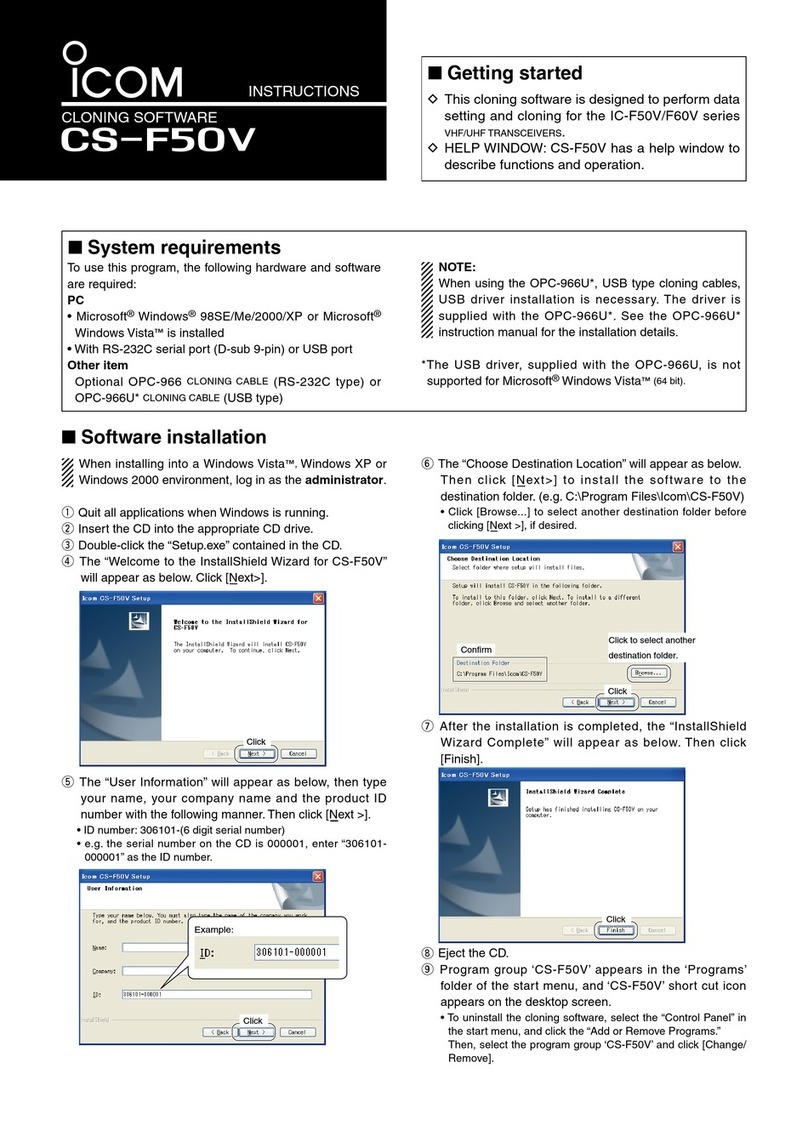
Icom
Icom CS-F50V User manual
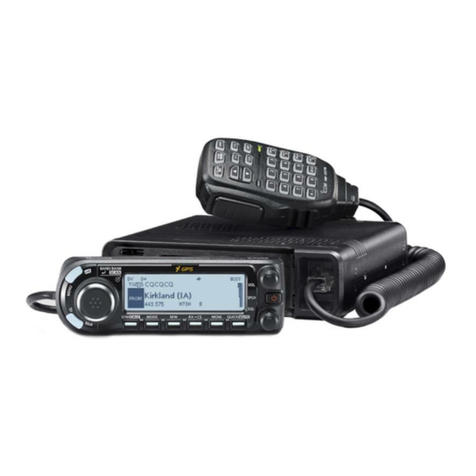
Icom
Icom D-STAR ID-4100A Setup guide

Icom
Icom IC-M500D User manual
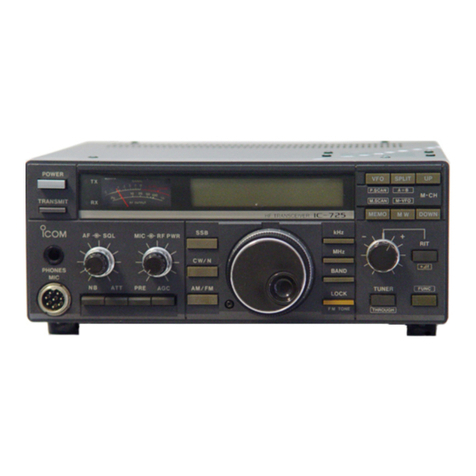
Icom
Icom IC-725 User manual

Icom
Icom IC-F22SR User manual

Icom
Icom IC-V8000 User manual

Icom
Icom IC-T70A User manual
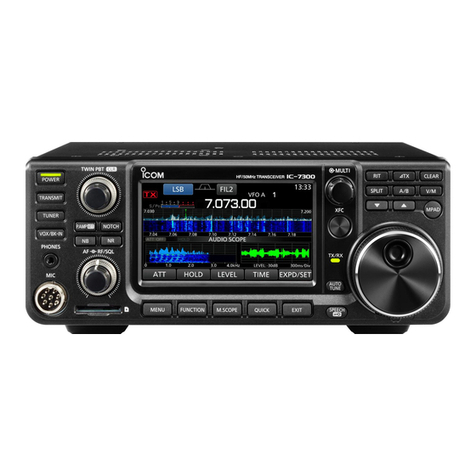
Icom
Icom IC-7300 HF Plus Installation instructions

Icom
Icom iF4029SDR User manual
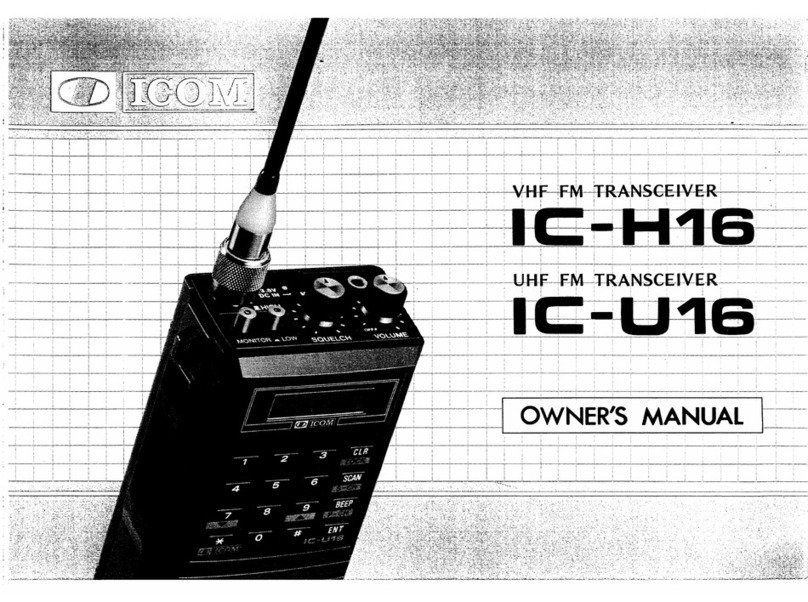
Icom
Icom IC-H16 User manual

